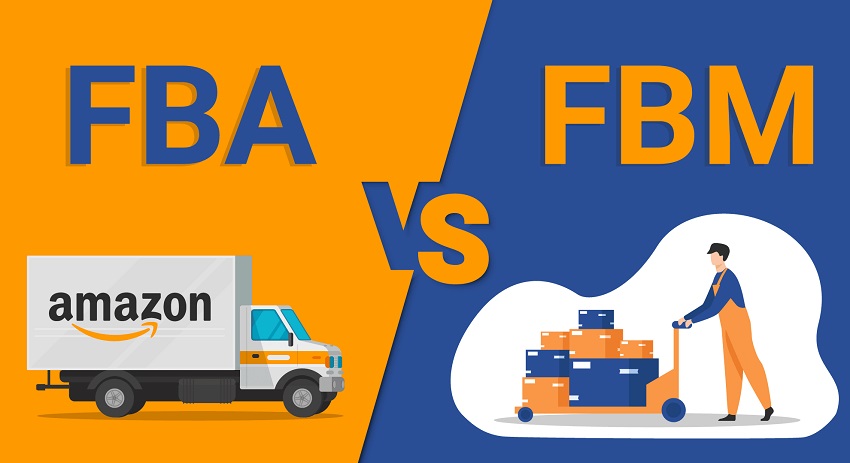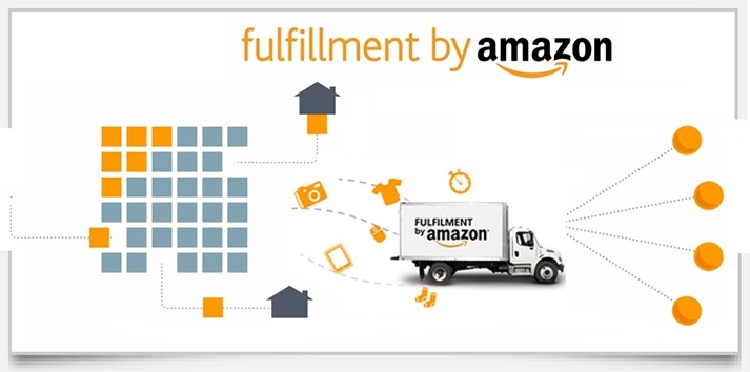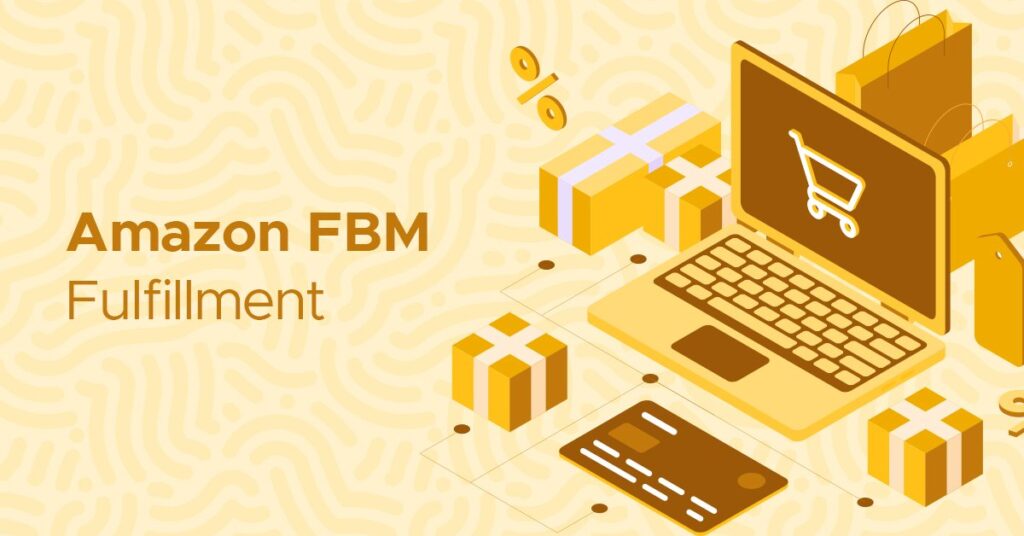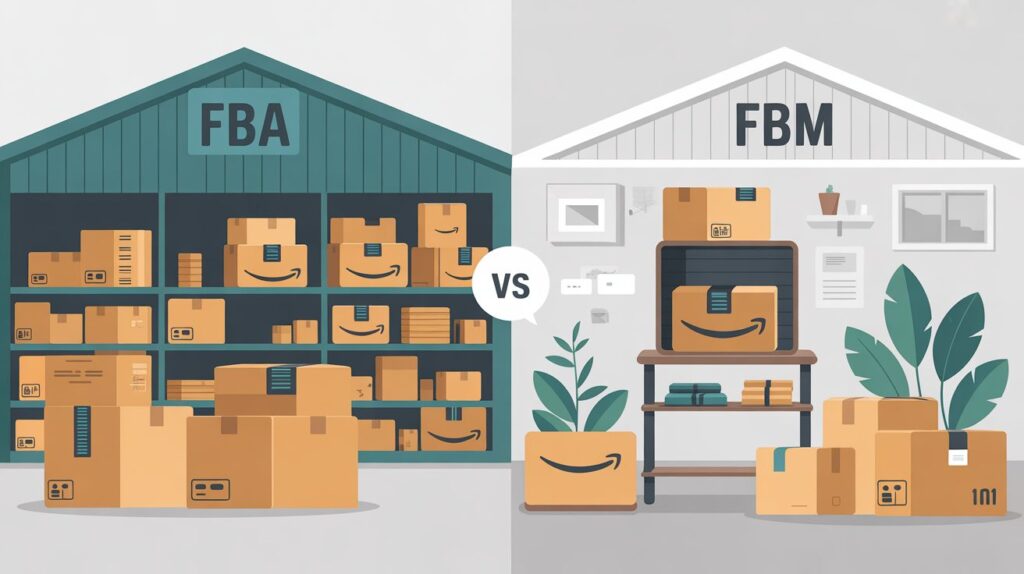When entering Amazon’s massive e-commerce marketplace, one of the most important decisions POD sellers must make is choosing an order-fulfillment method. The two most common options are FBA (Fulfillment by Amazon) and FBM (Fulfillment by Merchant). Each model has its own advantages and drawbacks that directly impact your costs, brand control, customer experience, and ultimately your profit.
This article takes a deep dive into a detailed, side-by-side comparison of FBA and FBM specifically tailored for POD sellers to help you make the most informed decision for your store.

What is FBA (Fulfillment by Amazon)?
Fulfillment by Amazon (FBA) is a service provided by Amazon that allows sellers to store their products in Amazon’s fulfillment centers. When a customer places an order, Amazon handles the entire fulfillment process on the seller’s behalf from picking, packing, and shipping to managing customer service and returns.
In simple terms, with FBA, you only need to focus on sourcing products, marketing, and sending your inventory to Amazon’s warehouses. The rest will be taken care of by the e-commerce giant.
How FBA Works with the POD Model
For POD (Print on Demand) sellers, the FBA process operates a bit differently compared to traditional product sellers. Since POD items are only printed after an order is placed, you can’t send large quantities of unprinted inventory to Amazon’s warehouses. Instead, the process typically goes as follows:
- Pre-produce a small batch:
You’ll need to forecast demand and pre-produce a limited quantity of your best-selling POD products (for example, T-shirts with your top designs) from your supplier (such as FlashPOD). - Ship products to Amazon’s fulfillment centers:
Once the items are printed and packaged according to Amazon’s standards (with proper labeling and barcodes), you’ll send the batch to Amazon’s fulfillment centers. - Amazon stores and fulfills orders:
Amazon stores your products, and when a customer places an order from your storefront, the company immediately handles the fulfillment and delivery on your behalf.
Advantages of FBA for POD Sellers

- Prime Badge and Fast Shipping: This is FBA’s biggest competitive edge. Products fulfilled through FBA automatically qualify for the Prime badge, meaning Amazon Prime members enjoy free two-day shipping. This superior delivery speed plays a crucial role in influencing purchase decisions.
- Higher Chance of Winning the “Buy Box”: Amazon’s A9 algorithm favors FBA listings when determining which product wins the “Buy Box” (the “Add to Cart” or “Buy Now” button). Winning the Buy Box significantly boosts product visibility, conversion rates, and overall sales.
- Saves Time and Effort: Amazon takes care of the entire operational process from warehousing, packing, and shipping to 24/7 customer support and return handling. This allows you to free up time and focus on core business activities such as design research, marketing, and business expansion.
- Access to Amazon’s Massive Customer Base: With Amazon’s reputation and extensive logistics network, your products can easily reach millions of loyal customers around the world.
- Simplified International Selling: Through the FBA Export program, Amazon enables you to ship products to customers in over 100 countries and regions without the hassle of dealing with complex customs procedures yourself.
Disadvantages of FBA for POD Sellers
- Inventory Risk: This is the biggest challenge of FBA for POD sellers. You must produce products in bulk before receiving actual orders, which goes against the “print-on-demand” nature of the POD model. If a design doesn’t sell well, you’ll face inventory buildup and long-term storage costs.
- High and Complex Fees: FBA’s fee structure can be quite complicated, including storage fees (based on volume and duration), fulfillment fees (based on size and weight), return processing fees, and other additional charges. These costs can significantly eat into your profit margins if not calculated carefully.
- Strict Product Preparation Requirements: Amazon enforces strict guidelines for how products are packaged, labeled, and shipped to their fulfillment centers. Noncompliance may result in shipment rejection or additional fees.
- Loss of Brand Control: All products are packaged in Amazon-branded boxes, reducing your ability to create a unique branded unboxing experience for customers.
- Challenges in Quality Control: Since you don’t directly handle each order, maintaining consistent product quality and ensuring that every item meets your standards becomes more difficult.
What is FBM (Fulfillment by Merchant)?

Fulfillment by Merchant (FBM), also known as Merchant Fulfilled Network (MFN), is a model in which the seller is fully responsible for the entire order fulfillment process after a product is sold on Amazon. This includes storing inventory, packing, shipping, and handling customer service.
With FBM, your Amazon storefront functions as a sales channel, while all backend operations are managed by you or a third-party logistics provider (3PL).
How FBM Works with the POD Model
The FBM model aligns perfectly with the nature of the Print-on-Demand (POD) business:
- Upload Products:
You create mockups and list your products on your Amazon store. - Customer Places an Order:
When a customer makes a purchase, the order details are sent directly to you. - Forward the Order to Your POD Supplier:
You then forward the order information (design, product type, and customer details) to your POD partner (such as FlashPOD). - Printing and Shipping:
Your POD partner prints, packages, and ships the product directly to the customer under your brand name. - Customer Updates and Support:
You are responsible for updating the tracking information on Amazon and managing all customer inquiries or support requests.
Advantages of FBM for POD Sellers
- No Inventory Risk: This is the biggest advantage of FBM for POD businesses. You only produce products after receiving an order, eliminating upfront inventory investment and storage-related risks entirely.
- Full Brand Control: You have complete control over your product packaging. You can use custom boxes, bags, thank-you cards, or marketing inserts that reflect your brand identity, creating a unique unboxing experience and strengthening customer connection.
- Higher Profit Margins: By avoiding FBA’s various fees, you can retain a larger portion of your profit per sale. You only need to pay Amazon’s referral fee, along with production and shipping costs to your POD partner.
- Operational Flexibility: You’re not bound by Amazon’s strict product-preparation requirements. You can work with multiple fulfillment partners and easily switch between them as your business needs evolve.
- Direct Customer Interaction: Handling customer service yourself allows you to better understand your buyers’ needs and feedback, helping you refine your products and improve your service quality over time.
Disadvantages of FBM for POD Sellers
- Operational Burden and Time-Consuming Tasks: You are fully responsible for managing the entire fulfillment process. Although your POD partner handles production and shipping, you still need to monitor orders, update tracking information, and resolve any issues that arise. As your order volume grows, this workload can quickly become overwhelming.
- Slower Shipping Speed: It’s difficult to offer two-day delivery like Amazon Prime. Longer shipping times can lower your conversion rate, especially among customers accustomed to Amazon’s fast delivery standards.
- No Prime Badge: Without the Prime badge, your listings may appear less attractive and trustworthy to many shoppers, reducing your competitive edge.
- Lower Chances of Winning the “Buy Box”: Amazon’s algorithm tends to favor FBA sellers, making it harder for FBM sellers to win the Buy Box and gain top visibility on product pages.
- Full Responsibility for Customer Service: You must maintain Amazon’s high standards for response times and customer satisfaction. Any delay or mistake could negatively affect your account health and seller performance metrics.
Detailed Comparison: FBA vs. FBM
To get a clear picture, let’s place FBA and FBM side by side and compare them across the most important criteria for POD sellers.
| Criteria | FBA (Fulfillment by Amazon) | FBM (Fulfillment by Merchant) |
| Fulfillment Process | Automated – Amazon handles everything | Managed by the seller or a fulfillment partner |
| Shipping Speed | Very fast (2–3 days, Prime) | Depends on the shipping carrier |
| Service Fees | High – includes storage, handling, and return fees | Lower – only pay for production and shipping |
| Brand Control | Limited | Full control (branding, packaging, inserts) |
| Inventory | Requires pre-printed stock – risk of unsold inventory | No inventory – printed on demand |
| Suitability for POD | Difficult – conflicts with print-on-demand nature | Highly suitable – flexible workflow |
| Customer Experience | Excellent – trusted Prime service | Depends on fulfillment quality |
| Profit Margin | Lower due to high fees | Higher margins per sale |
| Scalability | Easy to scale with minimal operational effort | Requires strong fulfillment systems to scale effectively |
Which service is better for sellers: FBA or FBM?

After a detailed analysis, there isn’t an absolute winner. The right choice isn’t whether FBA or FBM is universally “better,” but which model best fits your current stage and business strategy.
When Should You Choose FBM?
FBM is the ideal and safest choice for most POD sellers especially for beginners.
- Startup Stage: When you’re just starting out with limited capital and little data on best-selling designs, FBM allows you to test the market without the risk of holding inventory. You can upload hundreds or even thousands of designs to gauge customer reactions.
- Focus on Brand Building: If your goal is to build a strong POD brand with a loyal customer base, FBM gives you the flexibility to create a consistent brand experience from the product and packaging to customer service.
- Selling Niche Products: For products with modest but steady sales volume, maintaining an FBM model helps you optimize profits while keeping operations simple and efficient.
- Prioritizing Profit Margins: FBM lets you retain a higher profit per unit sold, which is especially valuable when you’re in the capital-building phase of your business.
When Should You Consider Using FBA?
FBA is an advanced strategy, best suited for sellers with experience and reliable sales data.
- When You Have a “Hero” Product: After a period of selling via FBM, you may identify certain designs or products that consistently perform well. At this stage, you can confidently pre-produce a small quantity of these bestsellers and send them to Amazon’s FBA warehouses.
- When You Want to Scale Sales for Bestsellers: By switching your “hero” products to FBA, you can leverage the power of the Prime badge and the higher likelihood of winning the Buy Box—both of which can elevate your sales to the next level.
- During Major Sale Seasons: In peak shopping periods such as Black Friday, Cyber Monday, or Christmas, delivery speed becomes a key factor. Having your products ready in FBA warehouses allows you to meet surging demand and seize golden sales opportunities.
- When You Want to Scale and Reduce Workload: If you’re overwhelmed by daily order management and wish to focus more on strategy and growth, outsourcing your fulfillment to FBA is a smart and efficient move.
Hybrid Strategy
A smart approach adopted by many successful POD sellers is to combine both FBA and FBM.
- Use FBM for your entire product catalog: This allows you to test new designs and sell niche products without the risk of holding inventory.
- Use FBA for a few “best-selling” products: Select proven top-selling items, produce a small batch, and send them to Amazon’s fulfillment centers to take advantage of Prime benefits and boost sales.
By doing so, you maintain the flexibility and low-risk nature of the traditional POD model while leveraging Amazon’s powerful marketing and logistics system to maximize profitability.
Choosing between FBA and FBM doesn’t just affect your fulfillment process it directly impacts customer experience and your overall profitability as a POD seller. Each model offers distinct advantages: FBA delivers speed, convenience, and customer trust, while FBM provides greater flexibility in production control, cost optimization, and personal brand building.
Understanding each model’s characteristics, applying them strategically, and partnering with a reliable fulfillment provider are the keys to sustainable growth in the competitive POD market.
Contact us at (+84) 943 024 337 or visit seller.FlashShip.net for expert consultation, fast quotations, and tailored fulfillment strategies to help your POD brand thrive with FlashShip.

